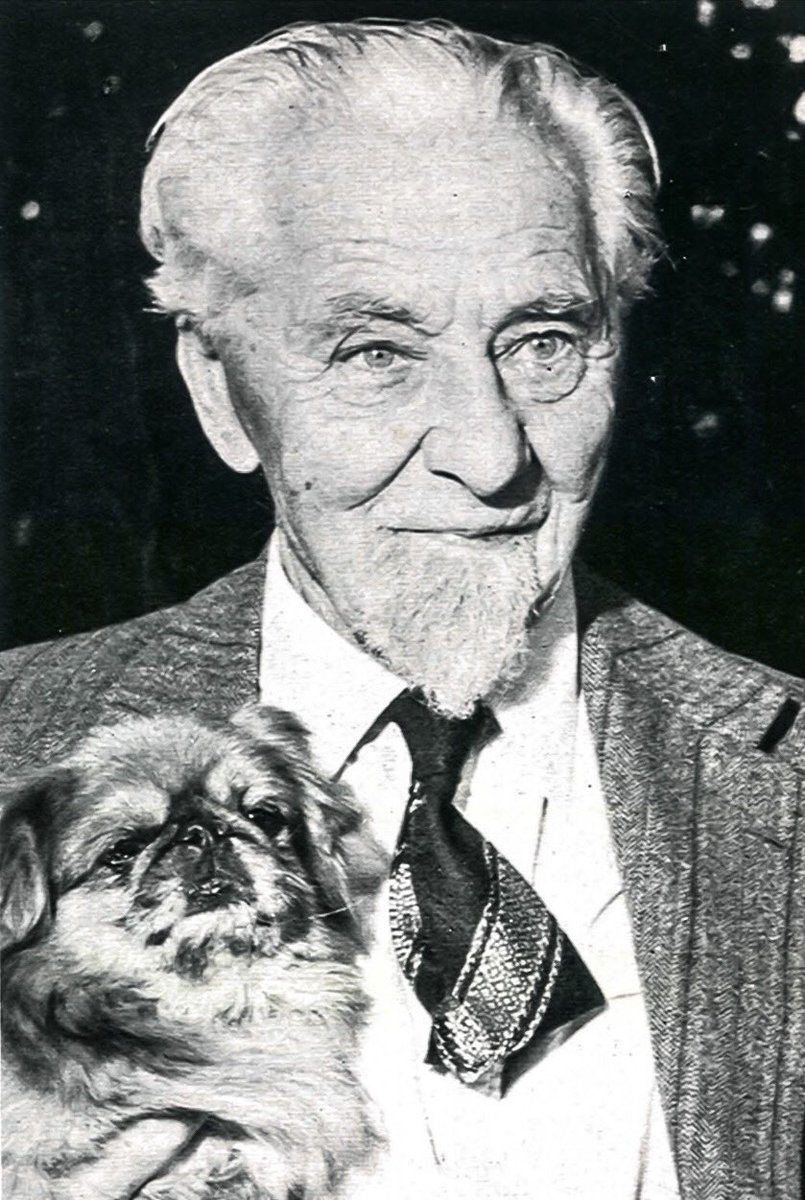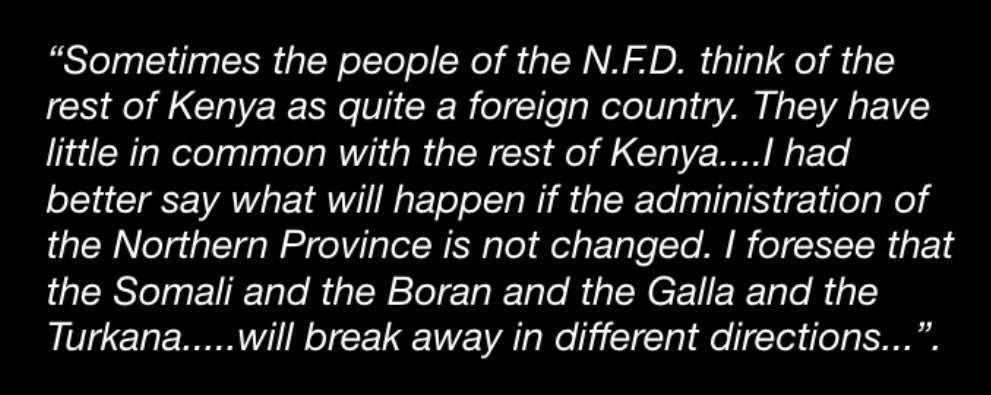
#HistoryKeThread: Kieleweke and Tangatanga Of The 1970s
—-
Kenya’s politics often have revolved around alliances and personalities.
—-
Kenya’s politics often have revolved around alliances and personalities.

In the late 1970s, when it was felt that President Jomo Kenyatta was aging and would leave the scene anytime, there were Kieleweke and Tangatanga movements.
Well, sort of.
Well, sort of.
There was a “Change The Constitution” faction whose leaders were powerful members of both KANU, the ruling party, and GEMA - the central Kenya tribal alliance that was the Gîkûyû, Embu and Meru Association.
This faction was opposed to a Clause in the Constitution that provided for the VP to ascend to the presidency should the office of the President become vacant. The Change The Constitution team was led by Dr. Njoroge Mungai (pictured), Kîhika Kimani, Njenga Karume, among others. 

Because these leaders were seen to be close to the then President, we could say that this was the Kieleweke faction.
Sometime in March 1977 or thereabouts, ahead of upcoming KANU elections which were scheduled to take place the following month, this Kieleweke faction proposed the following individuals for the various positions of the ruling party:
1.President - Jomo Kenyatta (elected unopposed);
2.Vice-President - Dr. Taitta Towett (pictured);
3.National Chair - kept open for candidate from Central Province;
4.Sec. General - Masinde Muliro
5.Asst. Secretary General - George Anyona
6.Treasurer - Grace Onyango
2.Vice-President - Dr. Taitta Towett (pictured);
3.National Chair - kept open for candidate from Central Province;
4.Sec. General - Masinde Muliro
5.Asst. Secretary General - George Anyona
6.Treasurer - Grace Onyango

7.Asst. Treasurer - Ahmed Arei
8.National Org. Secretary - John Keen
8.National Org. Secretary - John Keen
But defiant KANU leftists, the Tangatanga faction, decided to come up with its own list of candidates. Mombasa KANU supremo Shariff Nasir hosted no fewer than 60 Tangatanga MPs in Mombasa for a retreat. 

From the retreat, the faction declared they would be supporting the following leaders in the KANU polls:
1.President - Jomo Kenyatta (unopposed);
2.Vice President - Daniel Toroitich arap Moi (unopposed);
3.National Chairman - Mwai Kibaki (unopposed);
1.President - Jomo Kenyatta (unopposed);
2.Vice President - Daniel Toroitich arap Moi (unopposed);
3.National Chairman - Mwai Kibaki (unopposed);
4.Secretary General - Robert Matano;
5.Organizing Secretary - Nathan Munoko;
6.Asst. Secretary - Maina Wanjigi;
7.Treasurer - Eliud N. Mwendwa;
8.Asst. Organizing Secretary - Ahmed Ogle;
9.Asst. Treasurer - Onyango Ayoti;
5.Organizing Secretary - Nathan Munoko;
6.Asst. Secretary - Maina Wanjigi;
7.Treasurer - Eliud N. Mwendwa;
8.Asst. Organizing Secretary - Ahmed Ogle;
9.Asst. Treasurer - Onyango Ayoti;
On Saturday, 2nd April 1977, KANU delegates from all over the country gathered in Nairobi’s KICC iconic building for the much awaited party elections.
For hours that morning there was confusion. There was no sign that President Kenyatta would lead the event.
For hours that morning there was confusion. There was no sign that President Kenyatta would lead the event.
“....due to unavoidable circumstances, the KANU elections which were to be held at the Kenyatta Conference Centre are postponed until further notice according to a statement released today by Acting Secretary-General, Hon. Robert Matano.”
So, what happened?
So, what happened?
It depends on who you ask.
Some speculated that President Kenyatta was unwell and wasn’t in good shape to preside over the party polls. One compelling argument had it that the Dr. Njoroge Mungai-led Kieleweke faction had sensed defeat, and lobbied the president to call off the party polls.
Yet others argued that the President was unhappy about the divisions in the party, and had decided to postpone the polls in order to put his house in order.
And as KANU members countrywide looked towards Gatundu for guidance on what would happen next, GEMA leaders trooped into Nyahururu for a retreat.
On their part, the Luo Union under the aegis of majority MPs from Luo Nyanza congregated at Oyugis for their own deliberations.
From these community retreats, resolutions were made.
From these community retreats, resolutions were made.
The GEMA Community released a statement in which they resolved to “support the spirit of fair competition and democratic process of elections to all posts in the ruling party KANU”.
The statement went on to say that “any GEMA member was “entitled and free to stand for any post in the party, save that of the president of the party which naturally belongs to the father of the nation and liberator of this country, His Excellency Mzee Jomo Kenyatta.”
Luo leaders emerged from their Oyugis retreat and issued a 4-point declaration.
1.That MPs and others present pledge their loyalty to President Kenyatta, KANU, and the government;
2.That the Luo Union will work towards bringing about closer cooperation with GEMA;
1.That MPs and others present pledge their loyalty to President Kenyatta, KANU, and the government;
2.That the Luo Union will work towards bringing about closer cooperation with GEMA;
3.That all Luos must unite and work in cooperation with the Government.
4.That MPs and everyone present unanimously pass a vote of confidence in Mr. Oginga Odinga and appeal to him to take up the Luo leadership.
4.That MPs and everyone present unanimously pass a vote of confidence in Mr. Oginga Odinga and appeal to him to take up the Luo leadership.
Folks, the first BBI was not forged on the steps of Harambee House. It may have been unveiled at Oyugis 😊.
Just kidding.
But history repeats itself in interesting ways.
Well, the KANU elections standoff continued until August of 1978, when Mzee Kenyatta breathed his last.
But his death was preceded by succession tussles - about which I will soon write, God willing, pitting the State House “Deep State” against a clique of men who played a key role in midwifing Moi’s presidency 

• • •
Missing some Tweet in this thread? You can try to
force a refresh









